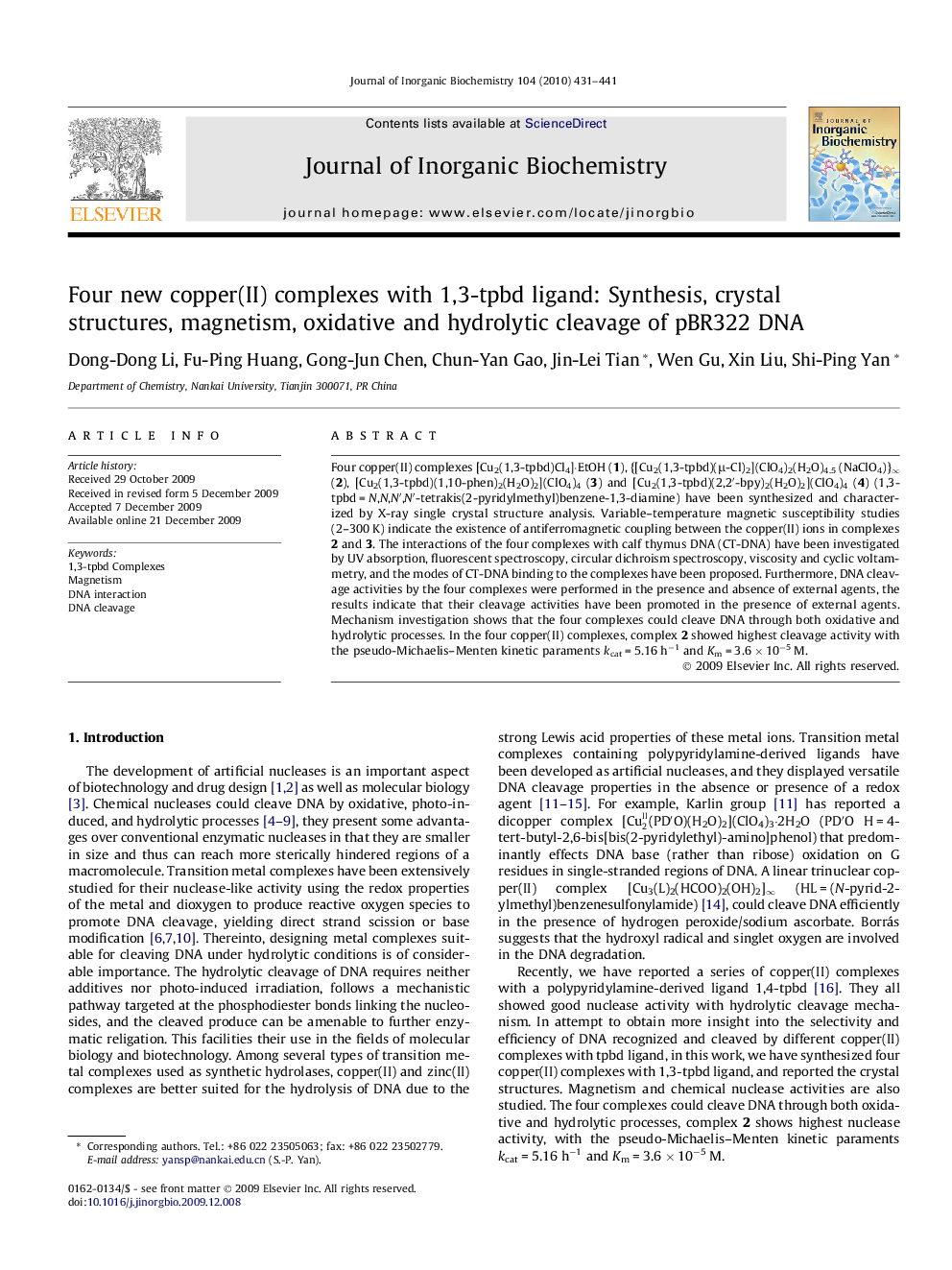| Article ID | Journal | Published Year | Pages | File Type |
|---|---|---|---|---|
| 1317988 | Journal of Inorganic Biochemistry | 2010 | 11 Pages |
Four copper(II) complexes [Cu2(1,3-tpbd)Cl4]·EtOH (1), {[Cu2(1,3-tpbd)(μ-Cl)2](ClO4)2(H2O)4.5 (NaClO4)}∞ (2), [Cu2(1,3-tpbd)(1,10-phen)2(H2O)2](ClO4)4 (3) and [Cu2(1,3-tpbd)(2,2′-bpy)2(H2O)2](ClO4)4 (4) (1,3-tpbd = N,N,N′,N′-tetrakis(2-pyridylmethyl)benzene-1,3-diamine) have been synthesized and characterized by X-ray single crystal structure analysis. Variable–temperature magnetic susceptibility studies (2–300 K) indicate the existence of antiferromagnetic coupling between the copper(II) ions in complexes 2 and 3. The interactions of the four complexes with calf thymus DNA (CT-DNA) have been investigated by UV absorption, fluorescent spectroscopy, circular dichroism spectroscopy, viscosity and cyclic voltammetry, and the modes of CT-DNA binding to the complexes have been proposed. Furthermore, DNA cleavage activities by the four complexes were performed in the presence and absence of external agents, the results indicate that their cleavage activities have been promoted in the presence of external agents. Mechanism investigation shows that the four complexes could cleave DNA through both oxidative and hydrolytic processes. In the four copper(II) complexes, complex 2 showed highest cleavage activity with the pseudo-Michaelis–Menten kinetic paraments kcat = 5.16 h−1 and Km = 3.6 × 10−5 M.
Graphical abstractSpectroscopic and gel electrophoresis methods revealed that four new copper(II) complexes showed high DNA-binding and cleavage activities. Complex 2 has the highest nuclease activity with the pseudo-Michaelis–Menten kinetic paraments kcat = 5.16 h−1 and Km = 3.6 × 10−5 M.Figure optionsDownload full-size imageDownload as PowerPoint slide
